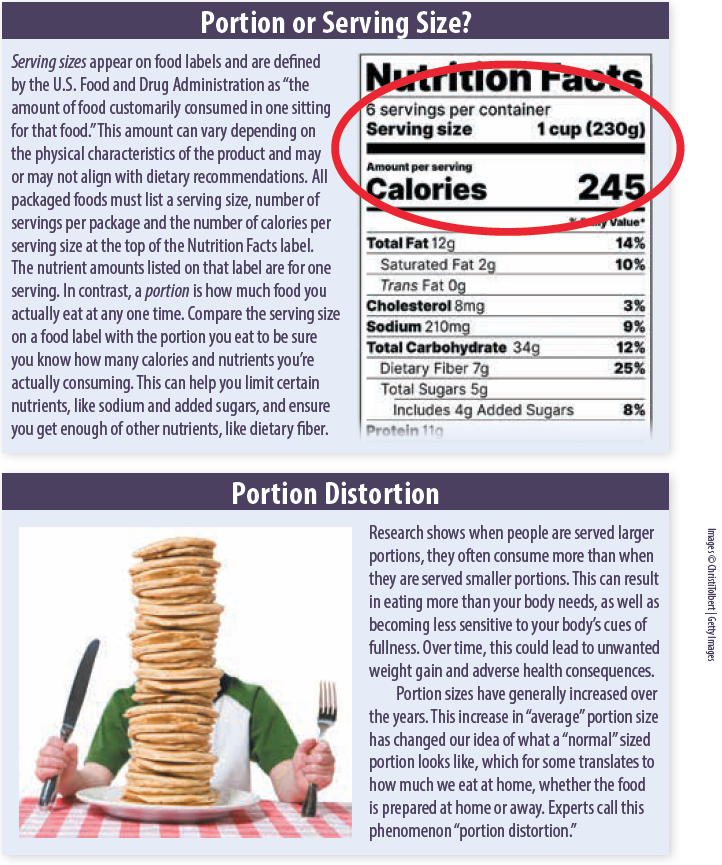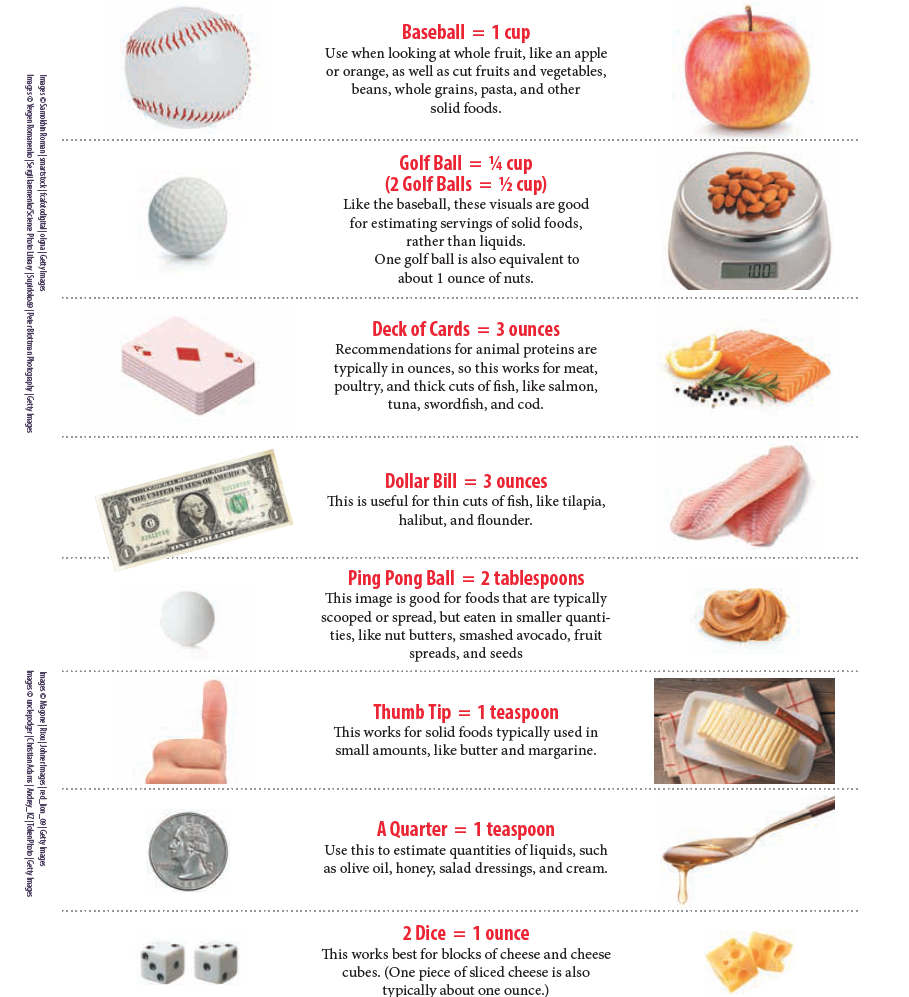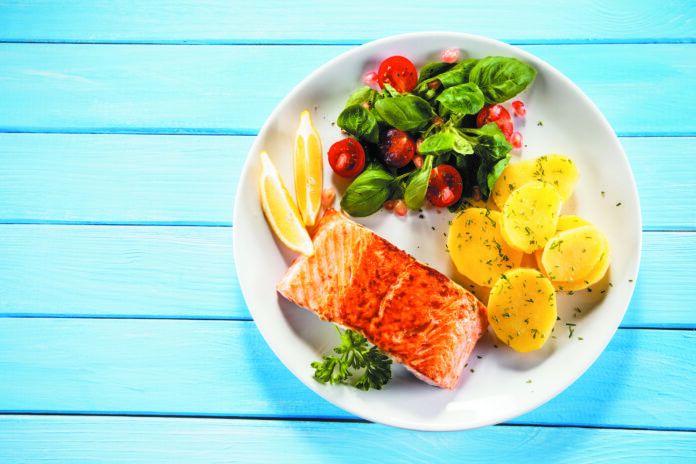Dietary advice often includes measurements. For example: for someone consuming a 2,000 calorie diet, the Dietary Guidelines for Americans recommend two-and-a-half cup-equivalents of vegetables and two cup-equivalents of fruits a day. But what does that actually look like on your plate? Additionally, Nutrition Facts labels contain a suggested serving size (see “Portion or Serving Size?” box). All of the nutrition data is for this particular serving size. How can you figure out how the portion you’re eating relates to the serving size?
There’s no need to pull out measuring cups or invest in a food scale. Equating these measures with common objects, like a baseball or your thumb tip, can help you get a feel for how much you’re eating. Whether you’re logging food into a food diary or app, trying to meet dietary recommendations, or estimating the size of your serving to see how much sodium, fiber, or other nutrients you’re getting, these visuals can help.

➧ Eyeball It. “Measure” food serving sizes by visualizing familiar items, like a baseball-sized cup of beans or a deck of cards as a single serving of salmon.
➧ Know Serving Sizes. Read package labels for serving size, which may be different in similar products, and compare it to how much you choose to eat.
➧ Portion Appropriately. Serve and eat portions that align with how much you want to eat. This avoids portion distortion.

























